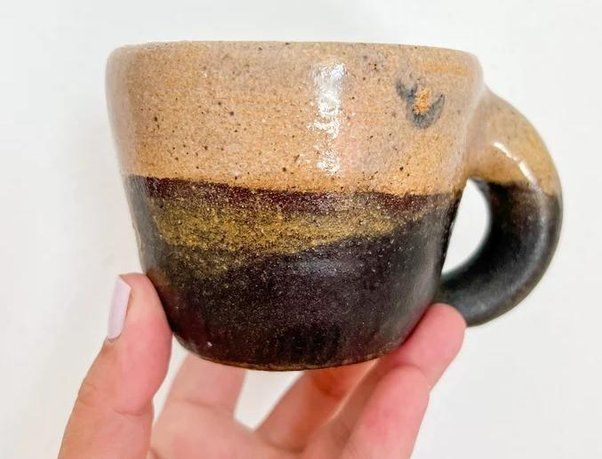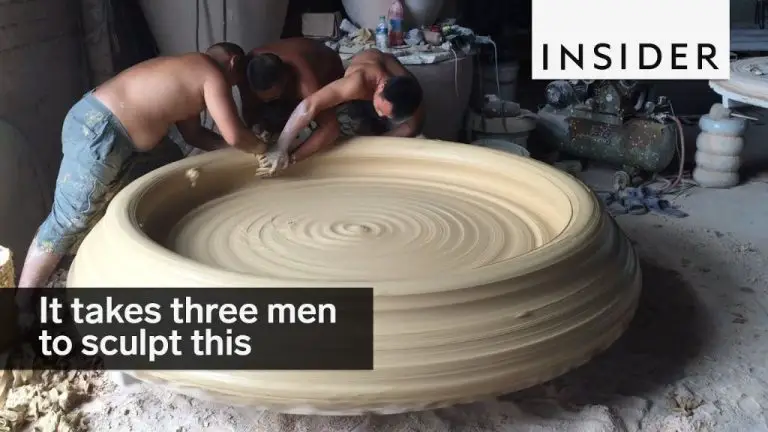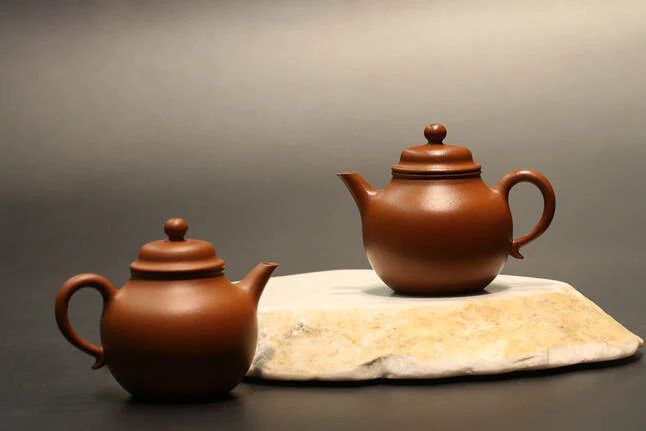Which Instrument Is Made From Clay?
Clay is one of the oldest and most common materials used to create musical instruments across cultures worldwide. Archeological evidence shows that ancient civilizations produced musical instruments from clay thousands of years ago. The natural properties of clay make it an ideal material to craft instruments that produce sound through vibration. Clay is abundant, malleable when wet, hardens when fired, and produces a resonant, warm sound when an instrument’s air column or surface vibrates. Master craftsmen throughout history have recognized clay’s acoustic properties and shaped it into an astounding array of wind, string, and percussion instruments that produce music through the centuries.
Clay Ocarinas
One of the earliest and most popular clay instruments is the ocarina. Ocarinas are a type of vessel flute that have been around for thousands of years. Some of the earliest ocarinas made of clay were produced in regions like China and Mesoamerica over 12,000 years ago.
Ocarinas are unique because they are made completely out of clay, with no other materials needed to produce sound. The ocarina’s shape includes a globular body with 4 to 12 finger holes. To play the ocarina, the musician blows into the mouthpiece and covers different fingerholes to produce musical notes.
Clay ocarinas produce a distinct sweet, hollow tone that cannot be replicated by ocarinas made of other materials. Their singing, flute-like sound has captivated listeners for millenia. Clay ocarinas are affordable, portable instruments that are fun and easy to learn to play. Their global popularity has continued non-stop throughout history.
Clay Flutes
Clay flutes are one of the oldest wind instruments, with examples found dating back thousands of years across many ancient civilizations. They produce sound by directing an airstream against an edge, causing the air to vibrate. This vibration creates sound waves.
Archaeologists have uncovered flutes made of clay, bone and ivory that date back to around 40,000 years ago. These ancient flutes had only a few finger holes, allowing for a limited range of tones and pitches. As flutes evolved over the centuries, more holes were added, allowing musicians to play a wider range of melodies.
Clay is an ideal material for crafting flutes and whistles because it can be shaped into hollow tubes and bells. Firing the clay hardens it enough to hold its form. Early clay flutes were often short tubes with an embouchure hole and separate whistle opening. More advanced designs featured a duct or windway against which the player blew to produce tones.
Several ancient cultures produced clay flutes, including the people of Judea, Sumer, Egypt, Greece and Rome. Chinese ceramic flutes called xun date back 7,000 years. In the pre-Columbian Americas, cultures like the Moche of Peru created ceramic flutes and whistles shaped like birds, humans, fruits, animals and more.
Today, ceramic flutes are still made and played around the world. While not as common as their wooden counterparts, clay flutes produce a unique timbre and continue to be a timeless musical instrument.
Clay Drums
Clay has been used for centuries in the making of drums and percussion instruments. The most iconic clay drum is the udu drum, which originated in Nigeria. Udu drums are shaped like an urn or pot with an opening at the top, and are made entirely from clay. To play the udu, the sides are struck with the hands to produce a variety of percussive sounds.
Clay is an excellent material for drum shells and percussion because it produces a warm, earthy tone. The natural acoustic properties of clay allow it to resonate and reverberate when struck. Clay can be molded into any shape and size, allowing drum makers great flexibility in design.
Other types of clay drums include the greda and hunka from Serbia, the ghatam from India, and the ctuk from Korea. Potter’s clay is most commonly used due to its durability once fired into ceramic. The thickness and shape of the clay shell impacts the drum’s tone and resonance.
Clay drums produce sounds ranging from deep booms to high pops depending on construction. The firing process hardens the clay and allows the drum to be played vigorously. Decorative patterns are often painted or carved into clay drum shells. With proper care, a clay drum can last for many decades.
In summary, clay is a unique material that has been used for millennia to create drums and percussion instruments celebrated for their resonant sound. Udu, greda, hunka, ghatam, and ctuk drums demonstrate clay’s versatility as an acoustic material for musical instruments.
Clay Trumpets
Clay trumpets have been found in archaeological sites across many ancient cultures. Early examples date back to Neolithic China around 7000 BC where clay tuyeres and bone flutes with clay parts were found. In ancient Egypt, clay trumpets were often buried in pharaoh’s tombs as part of the grave goods. These trumpets had long narrow tubes and flared bells, and many were decorated with hieroglyphs and religious imagery. The Israelites are said to have used ram’s horns and clay trumpets when marching around Jericho in the famous Biblical story.
In South America, ceramics date back to 2500 BC and clay trumpets have been found in the Moche culture of Peru, the Vicús culture of Peru, and the Chimú culture of Peru among others. These ancient clay trumpets had tubular or cone shapes with flared openings and some had animal shaped bells for decoration. Similar clay horns and trumpets have been found in ancient Mesopotamia, ancient China, Africa, and many other parts of the world. The presence of these artifacts across so many cultures indicates clay trumpets have been used to communicate over long distances since Neolithic times.
Clay Panpipes
Panpipes are one of the oldest musical instruments known to humankind, with artifacts found dating back over 2,000 years. While panpipes today are often made from bamboo or reeds, clay panpipes are also a traditional and popular variety. These panpipes consist of multiple tubes made out of baked or fired clay, cut to different lengths to produce different musical tones.
To make clay panpipes, artisans roll clay into hollow tubes of varying diameters and lengths. Once shaped, the tubes are left to dry completely before being fired in a kiln, which hardens and strengthens the clay. The tubes are then bound together, usually with string or wire. To play them, the musician blows across the top openings of the tubes, producing clear, flute-like notes. With practice, beautiful melodies can be produced on these deceptively simple-looking instruments.
Clay panpipes produce a sweet, mellow timbre unlike any other instrument. Musicians appreciate their warm, organic sound which contrasts nicely with their somewhat primitive construction. Clay panpipes are inexpensive to produce, require no complex mechanisms, and their tone actually improves with age as the clay continues to cure and harden over time. For these reasons, clay panpipes remain popular today among musicians looking for a distinct sound, as well as those wanting to get back to the basics of music-making.
Clay Kazoos
Clay kazoos are simple musical instruments that have been popular among children for generations. Unlike many instruments, kazoos are very easy to make at home using basic and readily available materials like clay and wax paper.
To make a clay kazoo, simply form a hollow tube out of clay, allowing it to dry and harden. Then cut a piece of wax paper to fit over one end of the tube as the kazoo’s resonator membrane. Humming or singing into the open end of the clay tube will cause the membrane to vibrate, amplifying the sound in a buzzy, kazoo-like way.
Crafting clay kazoos is an engaging hands-on activity for kids that also teaches principles of sound production and vibration. The finished kazoos, while primitive, can provide hours of fun as children experiment with making music and altering the kazoo’s sound by shaping the clay tube in different ways.
With minimal cost, effort, or musical skill required, clay kazoos are perhaps the simplest homemade folk instrument. Their do-it-yourself accessibility has given the kazoo a distinctive place in many cultures’ musical traditions and children’s imaginative play.
Clay Xylophones
Clay is sometimes used to make the keys of xylophones. Xylophones consist of tuned wooden bars arranged like a piano keyboard that are struck with mallets to produce musical tones. While the wooden frame and bars are usually made of rosewood, padauk, or other hardwoods, the keys can also be constructed from fired and tuned clay.
Clay offers some advantages over wood for xylophone keys. Clay is readily moldable into the required shapes and sizes for keys of varying tones. The firing process hardens the clay while retaining its ability to resonate when struck. Clay keys can be tuned more precisely to the desired pitches by carefully controlling the clay composition, moisture content, and firing temperature. Adjustments are easier with clay than wood, allowing tuning to be refined through trial and error.
High-quality clay tuned to specific notes results in clear bell-like tones from clay xylophone keys. The crispness and resonance of the clay contributes to the melodic quality of the xylophone’s sound. While wood remains more popular, clay provides an alternative material for xylophone key construction with its own unique acoustic properties.
Clay Saxophones
Ceramic saxophones are a relatively new member of the woodwind instrument family. Unlike most woodwinds which are traditionally made of wood, metal or plastic, ceramic saxophones are constructed entirely from porcelain clay.
The idea of a ceramic saxophone was first pioneered in the early 2000s by musician and inventor Xavier Perrot of France. Perrot experimented with making saxophone bodies out of porcelain, which he found produced a warm, organic tone compared to metal or plastic saxes. The ceramic material vibrates and resonates differently than other materials, resulting in a unique sound.
Modern ceramic saxophones like those produced by Perrot are fully playable instruments constructed from intricately molded and fired porcelain. The mouthpiece, pads, corks, and other fittings are typically made from conventional materials like metal, cork and leather. The body however, from the neck to the bell, is made completely from clay.
Clay saxophones are gaining popularity for their visual appeal and unique tonal qualities. The ceramic gives them an earthy, woody tone that many musicians find pleasing. They produce smooth, warm notes that blend well with other instruments. Ceramic saxes are also more lightweight than their metal counterparts.
While not yet as widespread as traditional saxophones, these innovative clay versions are catching on with sax players looking to stand out with a beautiful and exotic instrument.
Conclusion: Clay’s Enduring Value as an Instrument Material
Throughout human history, clay has been a vital material for making musical instruments. The oldest known musical instruments, flutes made from bird bone and mammoth ivory, date back over 40,000 years. However, the oldest clay instruments, ocarinas and whistles, date back over 12,000 years to ancient China, Egypt, and the Americas. Clay’s accessibility and malleability made it an ideal material for early instrument-making across many cultures.
Clay instruments like ocarinas and panpipes continue to be popular today, both for their historic charm and unique tonal qualities. The warmth and organic resonance of clay cannot be perfectly replicated by modern metal and plastic materials. As technology progresses, clay persists as a beloved traditional instrument material. Though now overshadowed by instruments made of metal, wood, and plastic, the simplicity and expressiveness of clay endures. For thousands of years, clay instruments have given musicians affordable, reliable ways to create music–a legacy sure to continue long into the future.



